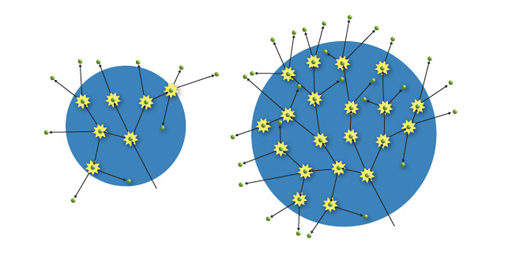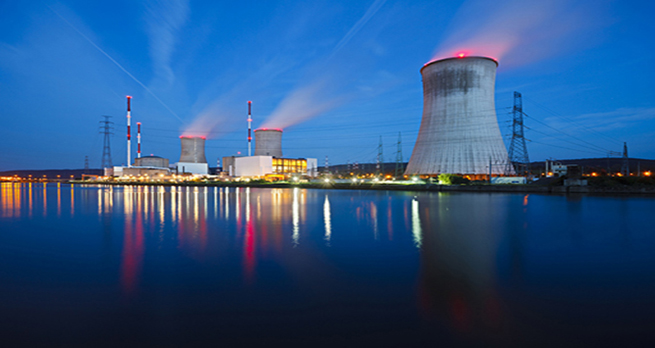1.3.4 The chain reaction
A fission chain reaction can proceed without intervention, as the free neutrons created by one fission event go on to trigger the next fission event.
As two or three neutrons are produced by each fission event, it is easy to see that a chain reaction could get out of hand and ‘runaway’, producing too much energy too quickly.
Terminology
- Criticality: the number of fission events is steady and the chain reaction releases a steady amount of energy.
- Sub-critical: the number of fission events decreases and the chain reaction releases progressively less energy.
- Super-critical: the number of fission events increases and the chain reaction releases progressively more energy.
In Figure 15, the left image shows a mass that is too small to sustain a chain reaction, as too high a proportion of neutrons escape by passing out of the mass. The right image shows that increasing the mass to the ‘critical mass’ causes a higher proportion of neutrons to stay within the volume long enough to induce further fissions.

As you will discover, the requirement in a nuclear power station is to maintain the reaction at, or close to, criticality. If it is sub-critical, the fission reaction will gradually reduce; if super-critical the reaction could run out of control.
In order for a fission reaction to go ‘critical’ it needs a critical mass of uranium. Effectively, the important property is size rather than mass and the fact that small objects have a greater surface area to volume ratio. If the amount of uranium-235 is too small the neutrons will escape from the surface and the chain reaction will peter out.
